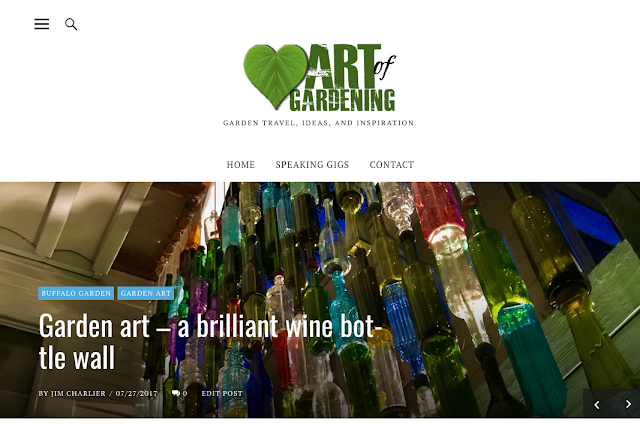On our trip to Portland, the number one thing on my list to see was its famous Japanese Garden. I've seen photos of it for years, and was teased by the many posts by Garden Blogger Fling attendees from their trip there this past June.
 |
We opted to walk up the hill to the garden.
There is a tram for those not so inclined. |
My own garden is a mish-mash of garden design projects - more a laboratory for sometimes misguided and trendy garden ideas gathered from trips and travels. Japanese gardens are the opposite of that – havens of tranquility derived through human-scaled plantings, stone, and water mimicking nature, bringing a sense of peace and harmony. No one's ever used any of those words to describe my garden.
The
Portland Japanese Garden was designed by Professor Takuma Tono in 1963. It is 5.5 acres with five distinct gardens, featuring a Japanese Tea House, meandering streams, walkways, rest areas, a gallery space, and ubiquitous gift shop. It has been called, "...the most beautiful and authentic Japanese garden in the world outside of Japan." I'm sure other Japanese gardens throughout the world probably make that claim as well.
 |
| It was a nice walk up the hill. |
I did read somewhere
that the only significant difference between this garden and other
Japanese garden is that there are more native plants incorporated into
this garden, and some of the plants, trees and shrubs of the Pacific
Northwest are appreciably larger and not "human-scaled" as would be
found in an authentic Japanese garden. I'm not quibbling, I'd not have
even noticed the towering pines to be out of place.
There
is a $9.50 Adults fee to enter the gardens, well worth the admission
price. It is open 10am-4pm October through March, and 10am-7pm April through
September. My only regret is that I did not see it in the fall. I have seen photos and the fall foliage is nothing short of spectacular.
 |
| On the Walk up the hill, donors names were carved into the stones making up the retaining wall. Nice touch. Subtle, to be sure, but not "in-your-face" way to recognize donors. And they'll be there basically forever! |
 |
| The view of Portland from the Japanese garden. |
 |
| One of the many water features throughout the gardens. |
 |
| A sand-and-stone garden called the "Flat Garden," raked to suggest the sea. The designer worked to balance the flat planes (the ground) with the volume of stones, shrubbery, and trees to create a
sense of depth. The garden is meant to be seen from a single
viewpoint. Our 16-year-old daughter just could not grasp why anyone would do this and call it a garden. |
 |
| Pretty hard to take a bad photo in this garden |
 |
| Strolling pond gardens were intended as recreational sites and were found on the estates of the wealthy. They were created to represent a landscape of a place once visited, or of one’s birth. |
 |
| All three of us liked this water feature/fountain. The large hollow cylinder would fill with water, and once full, would tip over and "BONG" on the water bowl, empty, then raise up again to be filled. I could have watched it all day long. |
 |
| Moss. One thing I noticed about Portland and the surrounding area is that the most plentiful plant is moss. Lots of them. |
|
 |
Gardens of raked sand, or gravel are called karesansui (dry landscape) gardens.
They are NOT Zen gardens, but are found at Zen Monasteries. |



























I went to Portland just to see this garden. I was 20 at the time, my friends thought I was nuts lol. I can't wait to go back, it was just beautiful :)
ReplyDeleteNow my goel is to get out there in the Fall to see it in color!
DeleteGood thing they don't have any cats living in that garden...
ReplyDelete